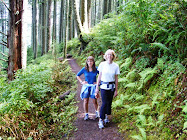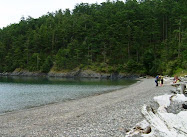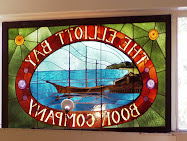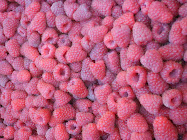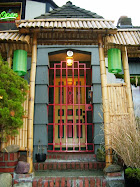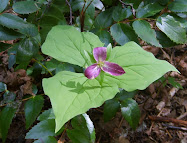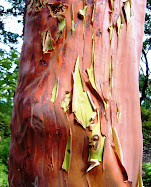Last spring when I started walking more around my corner of northwest Seattle, I first noticed the sign in front of a lush wooded lot: "Notice of Proposed Land Use Action."
I've seen a lot of these signs around Seattle the last few years, as the city rezones single-family residential areas to allow multi-story, multi-family buildings. With our shortage of housing and the City's push to increase density, many homes with spacious, landscaped yards are being demolished and scraped bare to make room for big boxes.
This particular sign showed the whole south end of the block being torn down (three homes) and replaced with a multi-story building extending to the proposed sidewalk. There wasn't a tree in sight on the proposed development sketch.
My stomach churned in dismay at the impending loss of the gorgeously landscaped lot on one corner, where a charming small house with a Japanese flair sat surrounded by a variety of beautiful, vigorous trees and happy, healthy shrubs like rhododendron and Oregon grape.
With the pandemic lockdown, the plans hit pause, and I often walked past that home with an increasing appreciation for the time and care the owners took cultivating such a sweet woodland in a built-out neighborhood.
And so a year passed, with many trips walking past this treasure, and nothing happened.
Within the last few months, however, the sign finally came down and the house started to look uninhabited. A few plants and trees started to disappear, and the yard began to look less than its meticulously cared for best.
A few weeks ago, after staying away for a few days, when I returned and saw the devastation, I was shocked. The huge laurel hedge and house at the west side of the block were demolished into a scorched earth war-like zone of dirt, jagged pieces of wood, and smashed bricks. The little Japanese house was also gone, with just a pile of rubble remaining.
But the woodland out front remained intact, for the moment. With the house gone, my walking partner and I scrambled over the bank and into an enchanted glen of native plants, shrubs, and lovely mixed trees.
I stepped into what felt like a secret garden, with native wood sorrel and delicate purple woodland violets scattered around carefully placed stones and the base of trees.This little glen felt surprisingly private and rich, just across the street from a playfield. With sun filtering through the newly leafed out Japanese maples and evergreens, I breathed in the rich scent of mature forest.
My friend Lynette brought her clippers, and got some greenery for the beautiful wreaths she makes. I came back a day later (they weren't working the weekend there) with a few pots and trowel and dug up some wood sorrel and violets to take home, to spare them the crush of the tractors.Before I stepped inside the glen, I paused and watched a hummingbird hovering and flitting around in there. As I stood in the glen, I found myself touching the trees, calling each one sister. It pained me to see such spring brilliance, with fresh shoots coming out of the evergreens, Japanese maple leaves unfurling, and lovely blossoms, knowing very soon their lives would be destroyed.
It brought back sorrowful feelings of a few months earlier, when I made the appointment for a vet to come to my home to put my Tashi cat to rest, although in that instance we were ending her suffering from end-stage kidney failure. She didn't know the fate that was soon to befall her. In this instance, these trees were healthy and vibrant with the promise of spring, likely not cognizant of their impending demise.
I was dreading walking by and seeing all this gone, but each day for a week the glen remained intact. Maybe the developers saw the value in retaining these mature trees and a well-tended landscape; perhaps they would keep them as an asset to work into their development plans.The next Monday I got a text from Lynette, telling me they had taken our garden. While I thought I couldn't bear to see it, I made myself walk over there to record what I saw, which was pretty darn sad. It made me feel numb.
I snapped a few shots and walked away. I haven't looked at it since. Fred, who tends the community garden across the street, said they found empty bird nests amidst the trashed landscape. No one in the neighborhood is happy about it.I do realize the irony of this European American, whose nearby home sits on what was lush forest land not much more than a century ago, bemoaning the loss of a mid-20th century garden. My ancestors came to this area over 150 years ago and were likely involved in the massive destruction/filling of the tidal estuary between West Seattle and present-day downtown.
But still, trees are important for the health of our climate, our birds, our wildlife, and, yes, people. The City of Seattle has some tree protection ordinances, but nothing that would have saved this little lot. I think it's a shame.
Shame on the City for not providing more oversight and regulations to save a wonderful woodland, however small, that provided valuable habitat for birds and such. Shame on the developers for not adjusting their plans, for not sacrificing a little $$ for the sake of saving a restorative woodland that would have been wonderful for the new residents and important for the birds who nested there. Shame on us all for allowing the continued loss of green space and trees in our city and region.
Happy trails and thanks for visiting Pacific Northwest Seasons! In between blog posts, visit Pacific NW Seasons on FaceBook, Twitter, and Instagram for more Northwest photos and outdoors news.































































